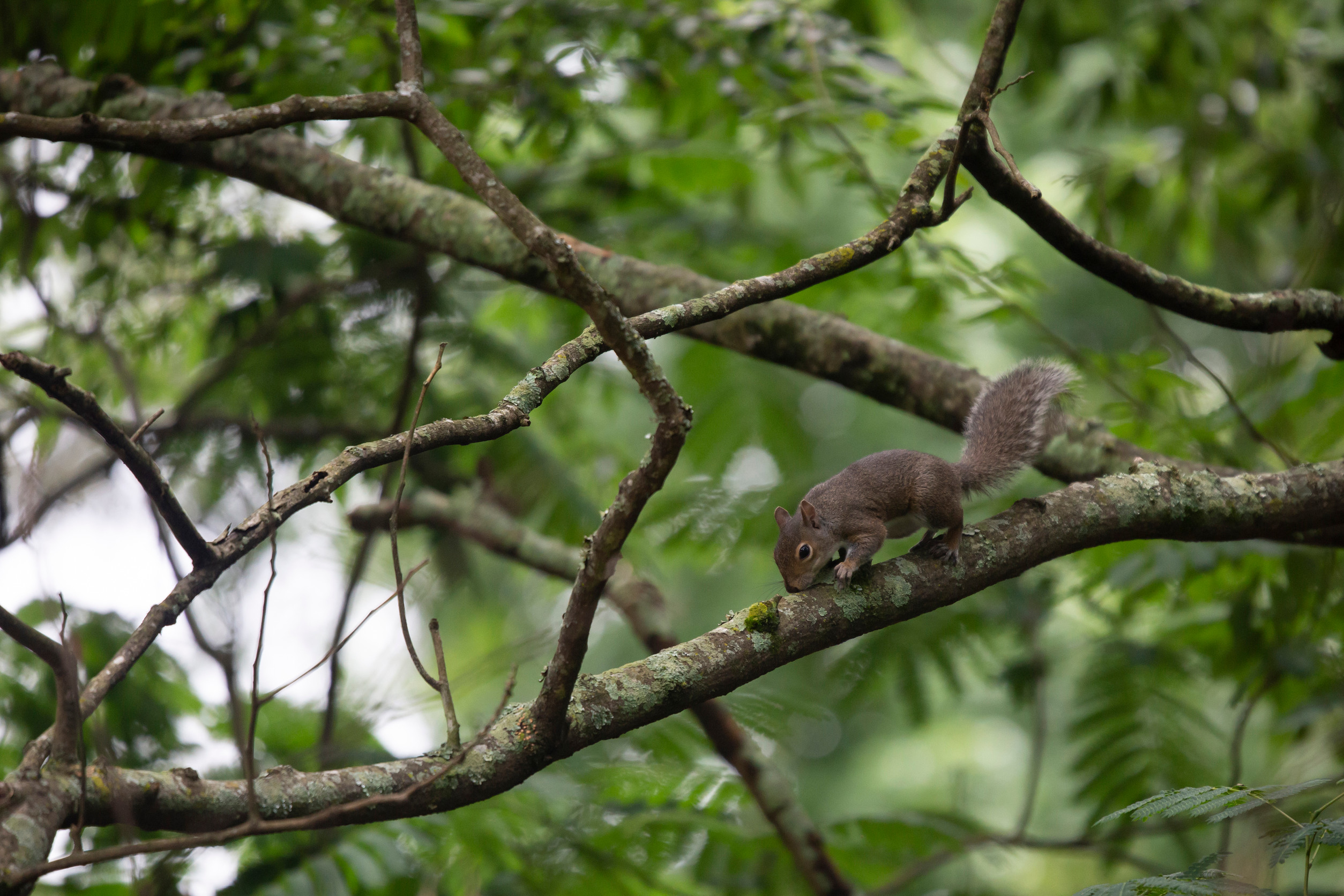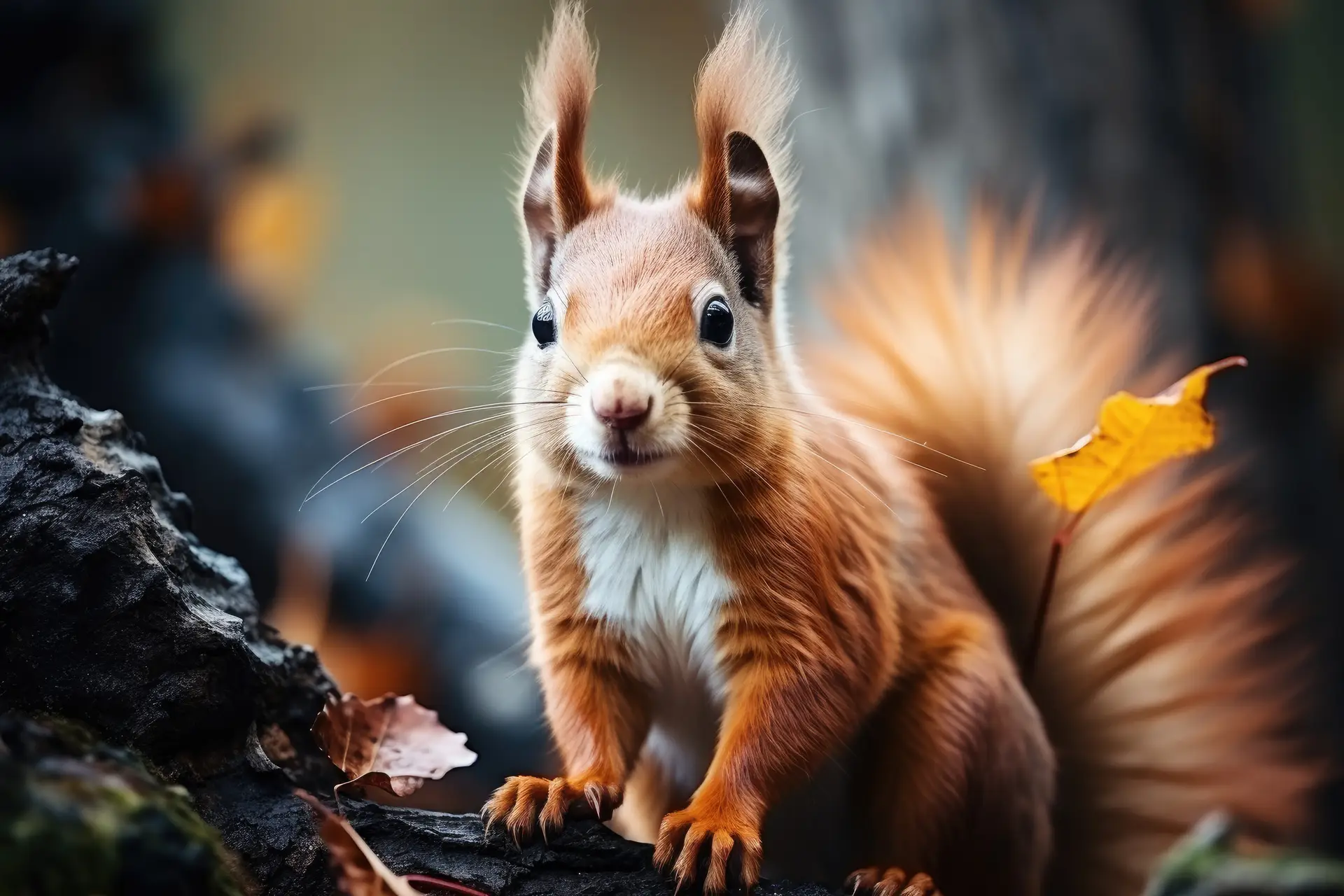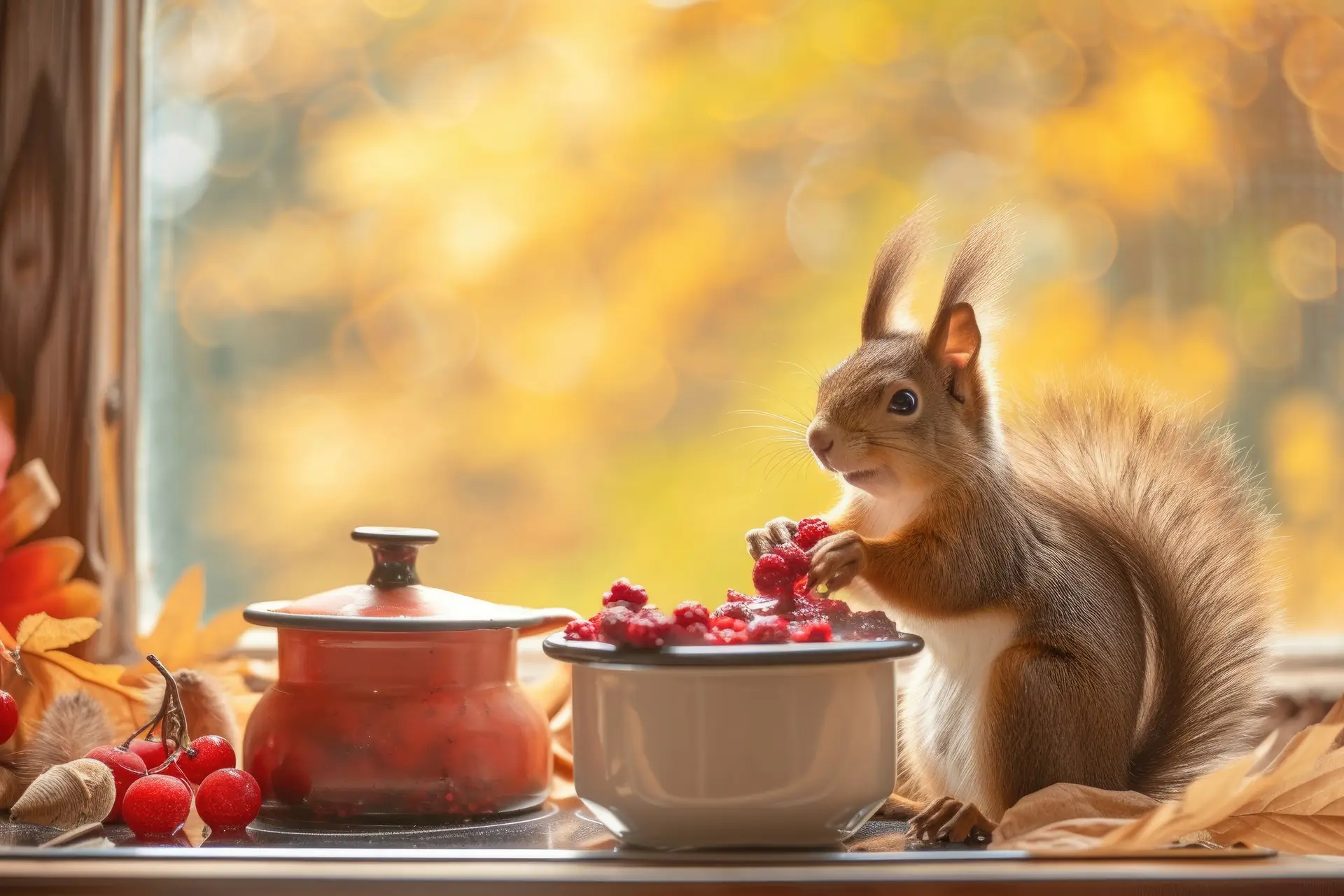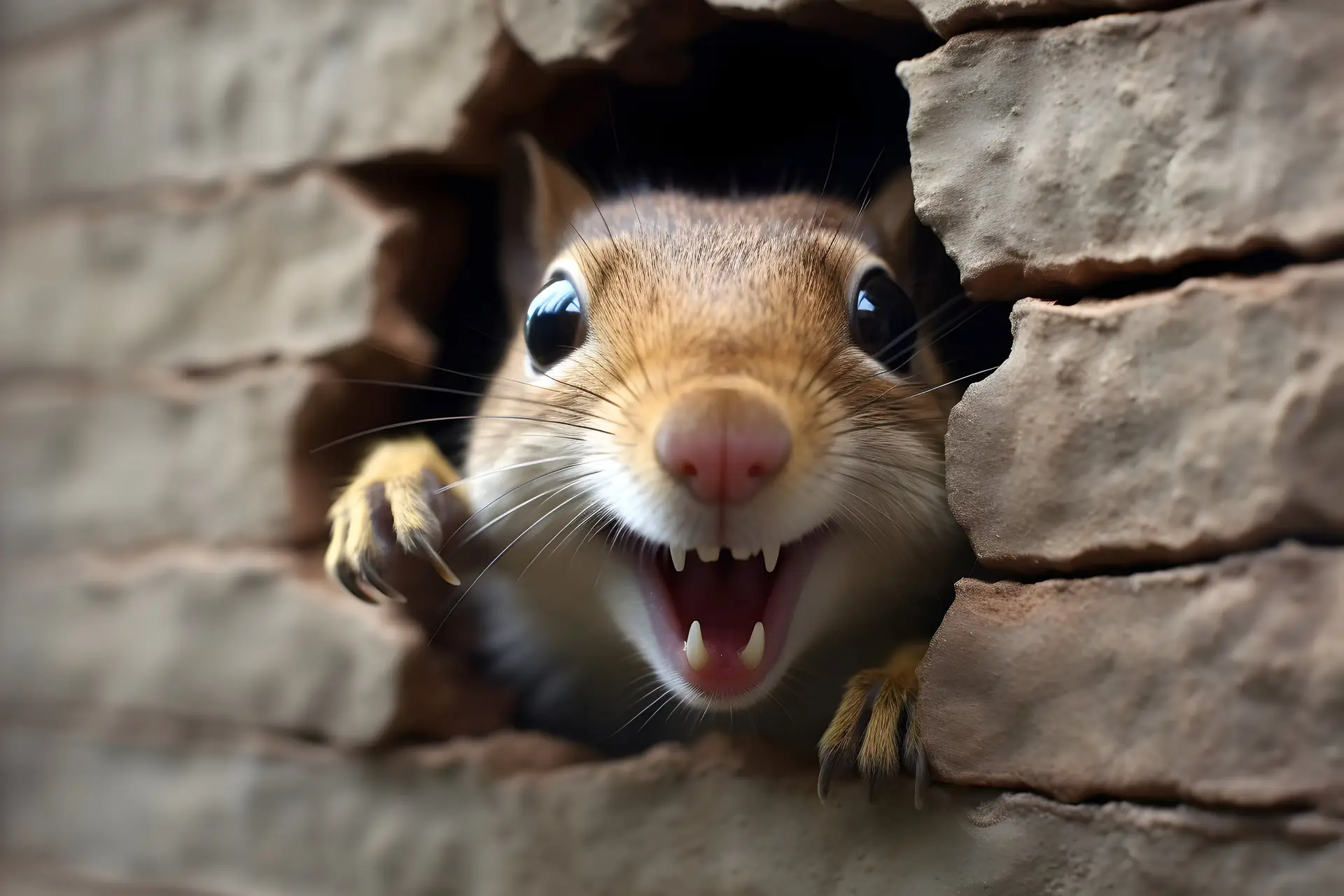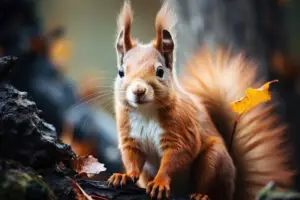Trees are a defining feature of our beautiful Pacific Northwest landscape, adding shade, beauty, and habitat to our yards in Vancouver, WA, Portland, OR, and surrounding areas. Naturally, these trees – from native Douglas Firs and Bigleaf Maples to backyard fruit trees – are also prime real estate for squirrels. Seeing squirrels leaping through branches is normal, but sometimes their presence in trees can lead to problems for Portland homeowners. While completely removing squirrels from your yard’s trees isn’t practical or usually necessary, understanding how to manage their activity and prevent related issues is. True Guard Pest & Wildlife helps homeowners address the problems that arise when tree-dwelling squirrels get too close for comfort.
Why Squirrels Love Your PNW Trees
Trees offer squirrels the fundamental necessities for survival:
- Food: Trees provide nuts (like acorns from oaks), seeds (from conifers), buds, bark, and sometimes fruit. Squirrels are adept foragers, constantly seeking these resources.
- Shelter & Nesting: Branches provide safe havens from predators and the elements. Squirrels build leafy nests, called dreys, often nestled high in the crooks of sturdy branches. These become especially visible when deciduous trees lose their leaves in the fall.
- Highways: Trees act as natural pathways, allowing squirrels to travel above ground, avoiding predators and obstacles.
The Real Issue: Trees as Bridges to Your Home
For most homeowners in our area, the biggest concern isn’t the squirrels in the trees themselves, but how those trees provide easy access to your house.
- Overhanging Branches: This is the most common problem. Branches extending close to or over your roof act like a direct bridge. Squirrels can easily leap from a branch onto your roof, giving them access to vents, soffits, fascia boards, and potential entry points into your attic or crawl space.
- Climbing Access: Trees situated very close to the house can allow squirrels to jump directly onto siding or window ledges, exploring for vulnerabilities.
Once they gain access to your home via trees, squirrels can cause significant damage – chewing wires, destroying insulation, contaminating spaces, and creating costly headaches.
Can Squirrels Damage Trees Directly?
While less common than home entry issues, squirrels can occasionally cause direct damage to trees:
- Bark Stripping: They sometimes chew or strip bark, particularly on younger or thinner-barked trees, which can girdle branches or stress the tree.
- Raiding Fruit/Nuts: They can be a nuisance in backyard orchards, taking developing fruits or nuts before harvest.
- Nest Building: While nests themselves rarely harm a mature tree, the activity around them can sometimes break smaller twigs.
Strategies for Managing Squirrels Around Your Trees
Since eliminating squirrels from trees isn’t feasible, the focus should be on preventing the problems they cause, primarily home entry:
- Strategic Tree Trimming (Most Effective!): This is your best defense. Maintain a clearance of at least 6 to 8 feet between tree branches and your roofline, siding, and utility lines. Pruning lower branches can also limit easy trunk access near the house. This removes the “bridge” squirrels rely on.
- Using Tree Baffles: Metal collars or conical baffles can be placed around the trunks of specific, isolated trees to prevent squirrels from climbing up. These are most effective on trees standing alone, away from fences, wires, or other trees squirrels could jump from. They can help protect vulnerable fruit trees or trees very close to the house where sufficient trimming is difficult.
- Protect Vulnerable Plants: If squirrels are consistently raiding specific fruit trees or shrubs, consider protective netting during fruiting season.
- Modify Nearby Attractants: Ensure bird feeders aren’t positioned where squirrels can easily jump from them to a tree near the house, or vice-versa. Secure garbage cans.
Why “Removing” Squirrels from Trees Isn’t the Solution
Attempting to trap and remove every squirrel using your trees is generally an endless task. Nature abhors a vacuum; if suitable habitat exists, other squirrels from the surrounding area will likely move in. The most sustainable approach is to modify the environment – specifically, manage their access to your home from the trees.
How True Guard Pest & Wildlife Can Help
While True Guard doesn’t typically focus on removing squirrels living naturally in yard trees, we are experts at addressing the problems that arise:
- Home Exclusion Services: Our primary role is identifying and sealing potential entry points on your house that squirrels might access from nearby trees. We ensure your roof vents, soffits, and other vulnerable areas are secure.
- Infestation Resolution: If squirrels have used trees to get inside your attic, walls, or crawl space, we provide professional, humane trapping and removal services for the squirrels inside your home, following all WA and OR regulations.
- Prevention Advice: We can assess your property and provide specific recommendations on tree trimming and habitat modification to reduce the risk of squirrels using trees to enter your home.
How to Protect Your Trees from Squirrels
Squirrels are a natural part of living in the tree-rich environment of Vancouver and Portland. Instead of fighting an impossible battle to remove them from trees, focus on smart management. Keep tree branches well clear of your home to prevent access. If squirrels have already bridged the gap and entered your house, or if you need expert advice on securing your home against them, contact True Guard Pest & Wildlife. We provide the professional squirrel removal services needed to protect your property.

